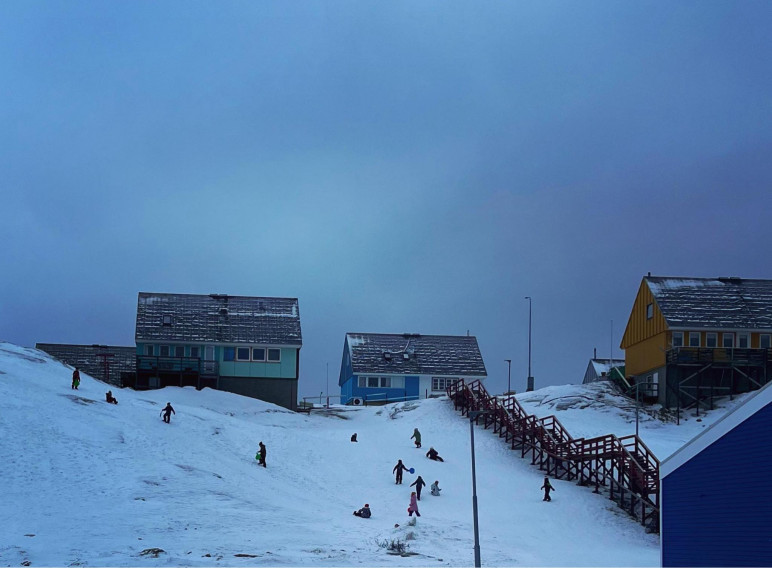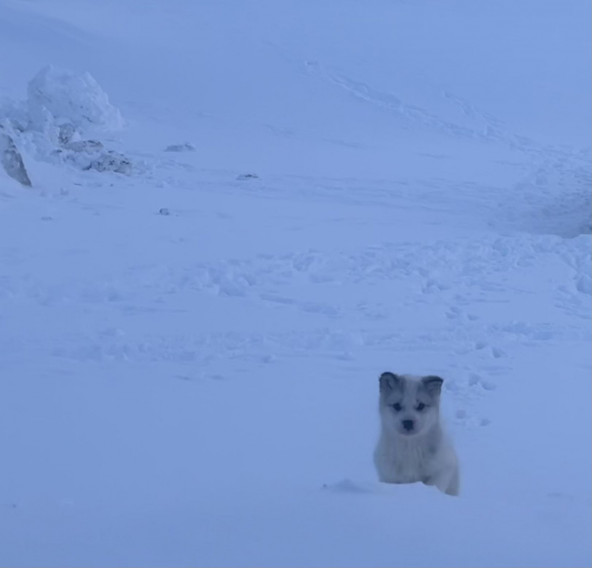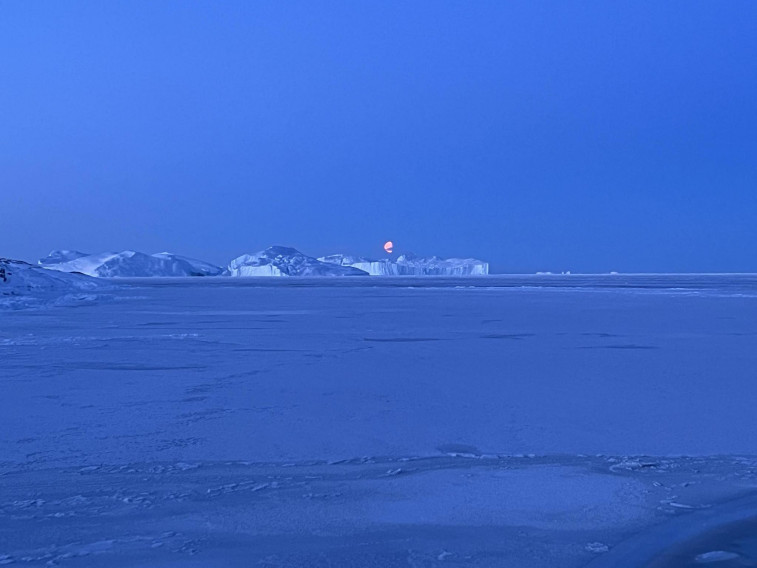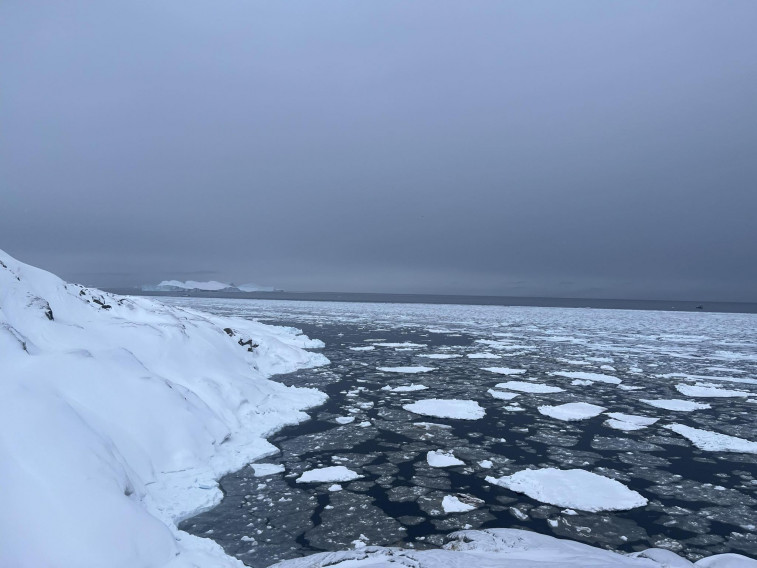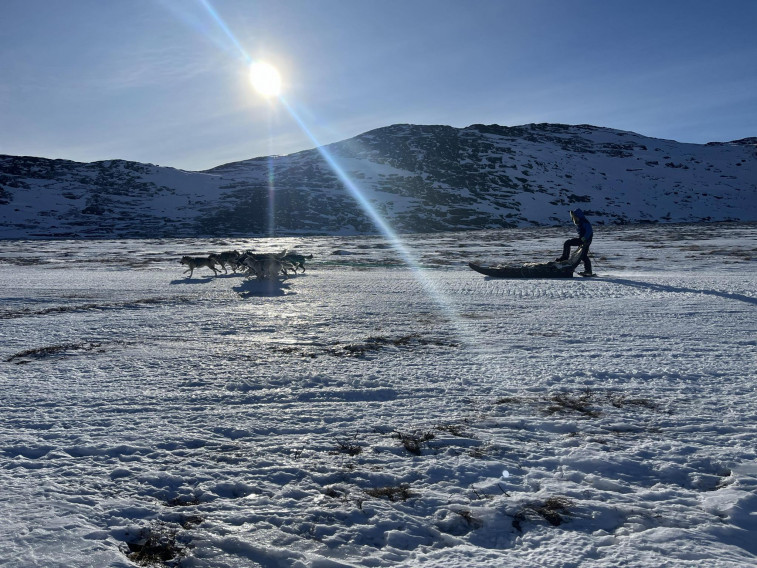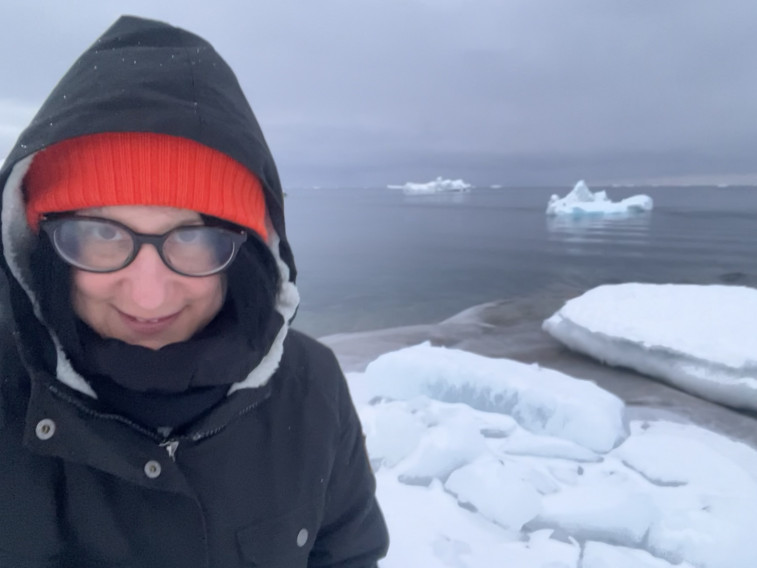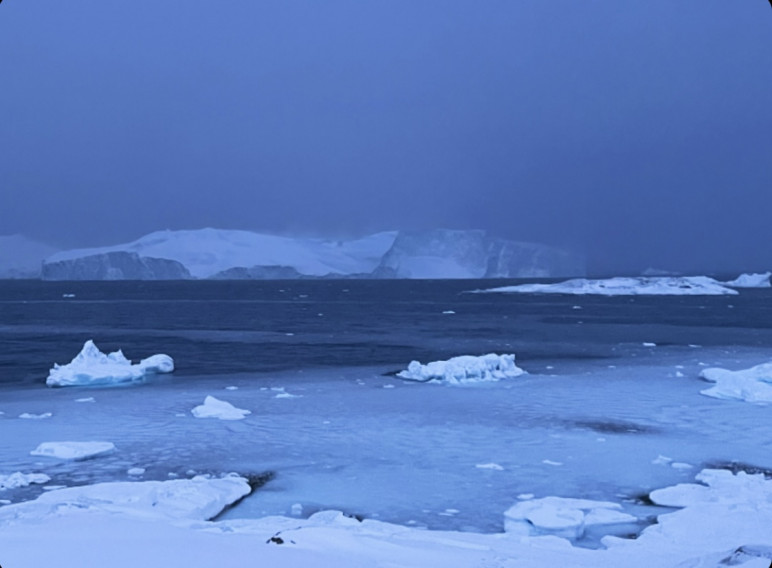Sangam Sharma
As part of FREE AWAY.
Kalaallit Nunaat, the “Land of the People” (generally known as Greenland in English) and its population really have blown me away. For once, there are the icebergs that the world’s biggest glacier, Sermeq Kujalleq, hurls into the Disko Bay (it is not by chance that icebergs are called “ilulissat” in Kalaallisut). The ice, the snow, the lights – a unique spectacle of nature that is precious.
The western coast of Kalaallit Nunaat (Greenland) where I stayed during my residency is the region hardest hit by climate change worldwide. Almost all the conversations I had here revolved around the weather. In Qeqertarsuaq, a man once told me: “The Earth has two hearts, one is here and one lies in Antarctica and soon it will just stop.” That is just one example out of many illustrating the urgency of the emergency of our planet. I did not meet any climate change deniers here.
The numerous encounters with the people living on the world’s biggest island left deep impressions on me. I was able to take back home numerous stories and many new perspectives or views that are reflected in the local language that is very complicated for me and, at the same time, also wonderful – a language that is at one with the nature of the land and provides deep insights into the culture of the Inuit.
A word that I heard very often is immaqa, perhaps or we will see – whether the flight is not cancelled, whether the weather stays nice, whether the heating system will be repaired…
A word resonating with uncertainty (it is not a clear yes), but also with hope (it is not a definite no). First of all, people live in the present moment. It is the weather that has the final say here.
| 1. | My stay in one word: |
| The organization located in Ilulissat (Arctic Culture Lab of Andreas Hoffman) is unfortunately not recommendable. It provides no support at all – it is all about money. Regrettably, I had rather bad experiences with it. The land itself, however, is highly recommendable. You get impressions that will last your whole life. |
|
| 2. | Dos & don’ts in this place: |
| This is still a land colonized by Denmark (although self-governed since 2009) with approximately 90%of the population being of Greenlandic origin. An absolute majority longs for independence. It is important to be aware of this and to show appropriate sensitivity (also with regard to traumata).
When you try to learn/speak at least a few words of Kalaallisut (Greenlandic), you will be rewarded. It goes a long way! It is best to learn from the locals. Learn to live with silence (“We are quiet people” by Qupanuk Olsen in Q’s Greenland on YouTube), modesty is of great importance. Never underestimate the weather (it is best to always take along an extra layer). When you are exposed to the wind and the weather it is a must to use very greasy cream (I bought a face cream for babies made up of 100% fat at a local supermarket). You have to bear in mind that the temperature is 10-15 °C lower when you are on water/ice (sea) and during sled/snow scooter tours (you have to deduct this from the prevailing temperature), the same applies to wind chill. Please note that electronic devices (cameras, mobile phones, video equipment, etc.) do not work long and batteries are emptied extremely quickly when it is very cold. Absolutely bring an open mind and awareness of local ways of life/backgrounds. My motto was: listen and learn (and laugh together – there is also plenty of good humor around here). You should not take yourself all too seriously and also should (be able to) call into question your own position. |
|
| 3. | Things I miss since I am no longer there: |
| People and nature. Snow and ice. The language, exchanges and the Arctic. However, I make great efforts to make these relationships last (it is the beginning, not the end). Faxe Kondi (similar to Sprite). | |
| 4. | Where to shop great supplies: |
| No, you can only get the basics here (sketch pad, pencils, etc., perhaps also electronic devices/batteries, etc. (in Ilulissat). | |
| 5. | What you should definitely bring with you from home: |
| A lot of warm clothes (merino, fleece, techwear) to wear in layers, the top layer has to protect well against the wind (snowstorms are not uncommon here), really good, very warm and snow-resistant footwear (I bought my Sorels 2nd hand in Vienna). Better invest in Arctic standard brands (Fjällräven, Sorel, Baffin, Colombia, etc.). If possible, get them second hand already at home, since everything (!) is rather expensive on site. This also applies to basics/food from the supermarket (a lot has to be flown in or brought here by ship a few times a year when the sea happens to be ice-free). If you have to replace clothes, I recommend the Greenlandic brand Meqqusaalik, usually also available at supermarkets.
In winter, ice spikes for your shoes (can usually also be bought on site). Furthermore, vitamin D capsules (because of the darkness from November to February). In general, vitamin supplements are not a bad idea (especially for vegetarians; following a vegan diet would be very difficult here). I also turned to fresh, local fish (in Austria I stick to a vegetarian diet). Money (i.e. saving a bit beforehand) and an insurance covering Greenland (Alpenverein, for example, does not; however, as an EU citizen you get initial care at hospitals/health centers). |
|
| 6. | Concerning art at this destination and where I visited the best exhibitions: |
| The permanent exhibitions at the Ilulissat Art Museum and Qeqertarsuaq Museum. If you want to see more (galleries and so on), you have to go to Nuuk. Also visits to the workshop of local artists in Ilulissat. | |
| 7. | Around the studio – where I shop, drink my coffee and get the best lunch deal in walking distance: |
| There are a few cafés in Ilulissat, the best of which was Cafénnguaq. In Qeqertarsuaq, basically the only one was Bella’mut as Kuannit – also a small shop with local art – was only open occasionally. There was also just one supermarket there, but that’s enough. | |
| 8. | Where I like to spend the evening (dinner, drinks, best sound and networking opportunity): |
| Optimally at the home of new friends or enjoying the evening atmosphere/sunsets/polar lights outdoors. If you prefer an urban setting, this is not the best place for you. Ilulissat has a few cafés/pubs often offering meals during the day. On weekends, local bands frequently play there. In that case, they close in the evening and open again at 10:00 pm. | |
| 9. | What would have been useful to know before coming here and starting my residency: |
| This was a self-organized residency under the BMKOES’ Free Away grant. There are only a few options when it comes to official residency programs in Kalaallit Nunaat. They currently are only offered in Nuuk, Ilulissat and, theoretically, in Upernavik (suspended for the time being).
It would have been good if I had had more insights into the organization and, perhaps, even drawn up an alternative plan (e.g. searching for other contacts and engaging in networking beforehand; the BMKOES shows a great deal of understanding when something does not work out so well – just communicate everything transparently) so that you quickly have a solution in the worst case. Otherwise you are quickly isolated in Greenland and have no choice but to simply see it through (the towns are often very self-sufficient, there are no roads between them and long trips may be difficult especially in winter and, in general, very expensive – in many cases it is less costly to fly to Copenhagen than to another place in Greenland). During the ice-free months, it is less expensive to take a boat. Unfortunately, I cannot recommend the residency organization in Ilulissat (Arctic Culture Lab). The guy (not a local) managing it is difficult. There was zero support/understanding. The focus is more on money and appropriation rather than on genuine exchanges. In contrast, I have felt very well supported by the BMKOES and its solution-oriented communication. The same is true for IG Bildende Kunst (membership in this organization is a good idea also in case of problems). |
Website resident: sangamsharma.com

